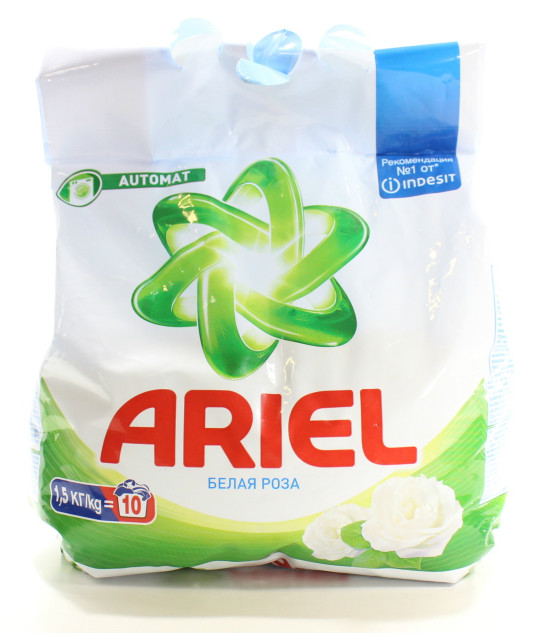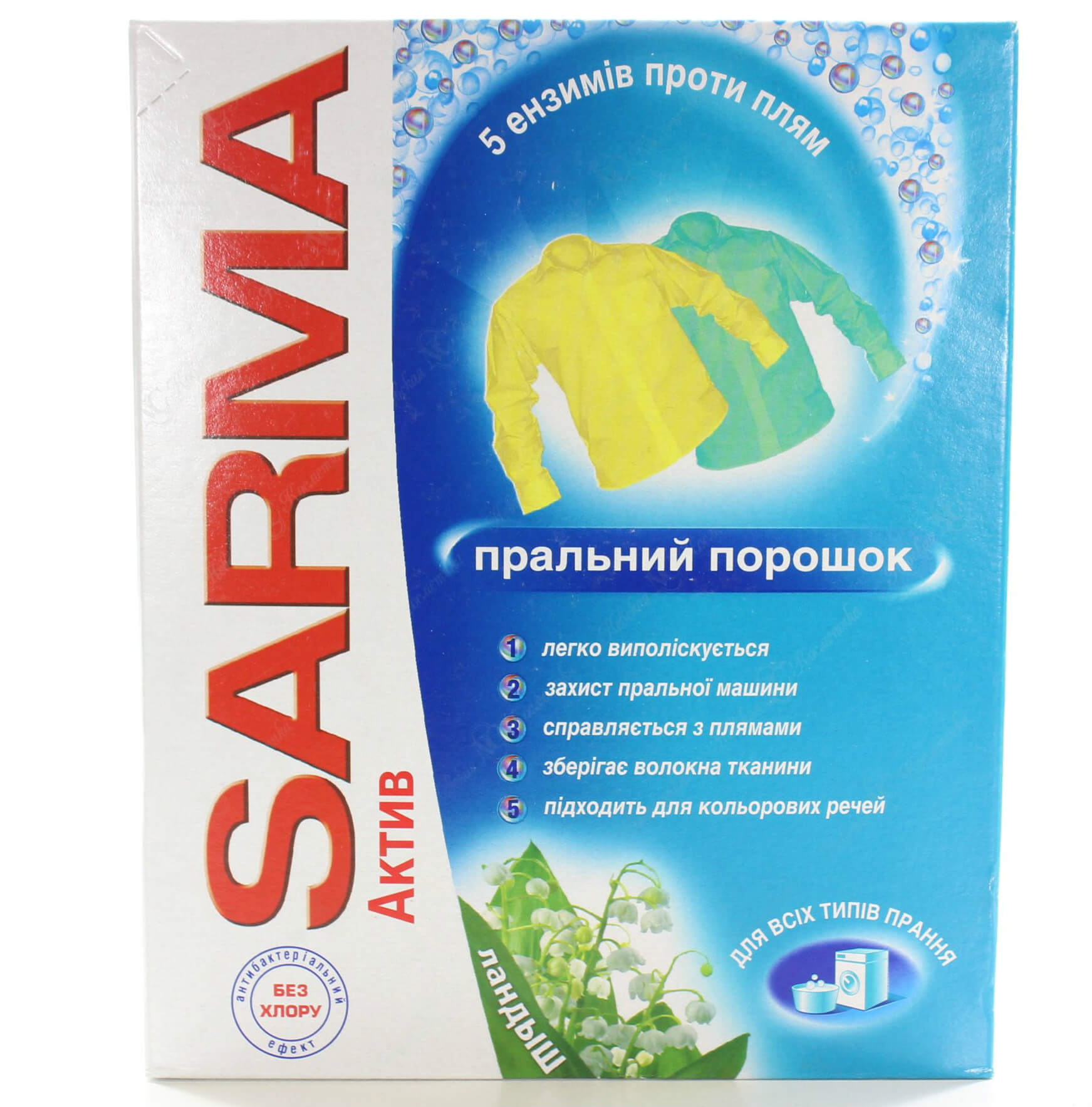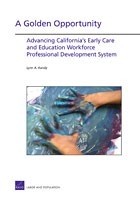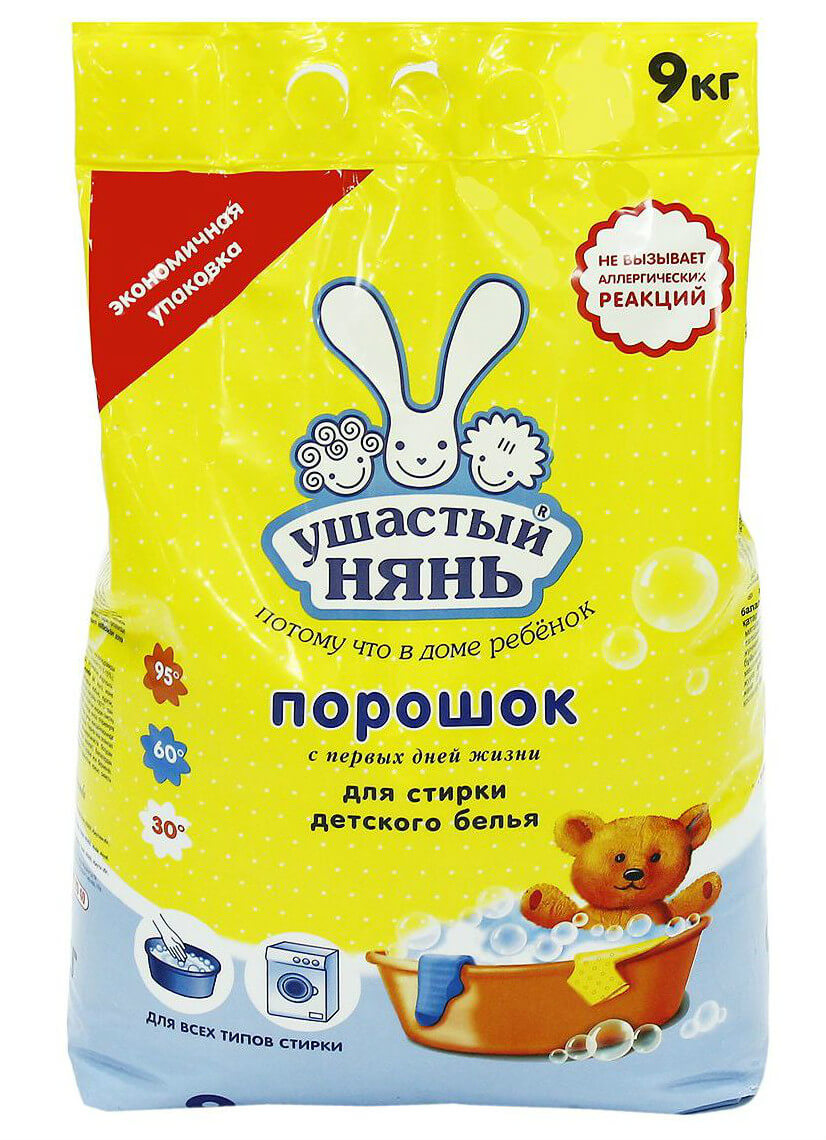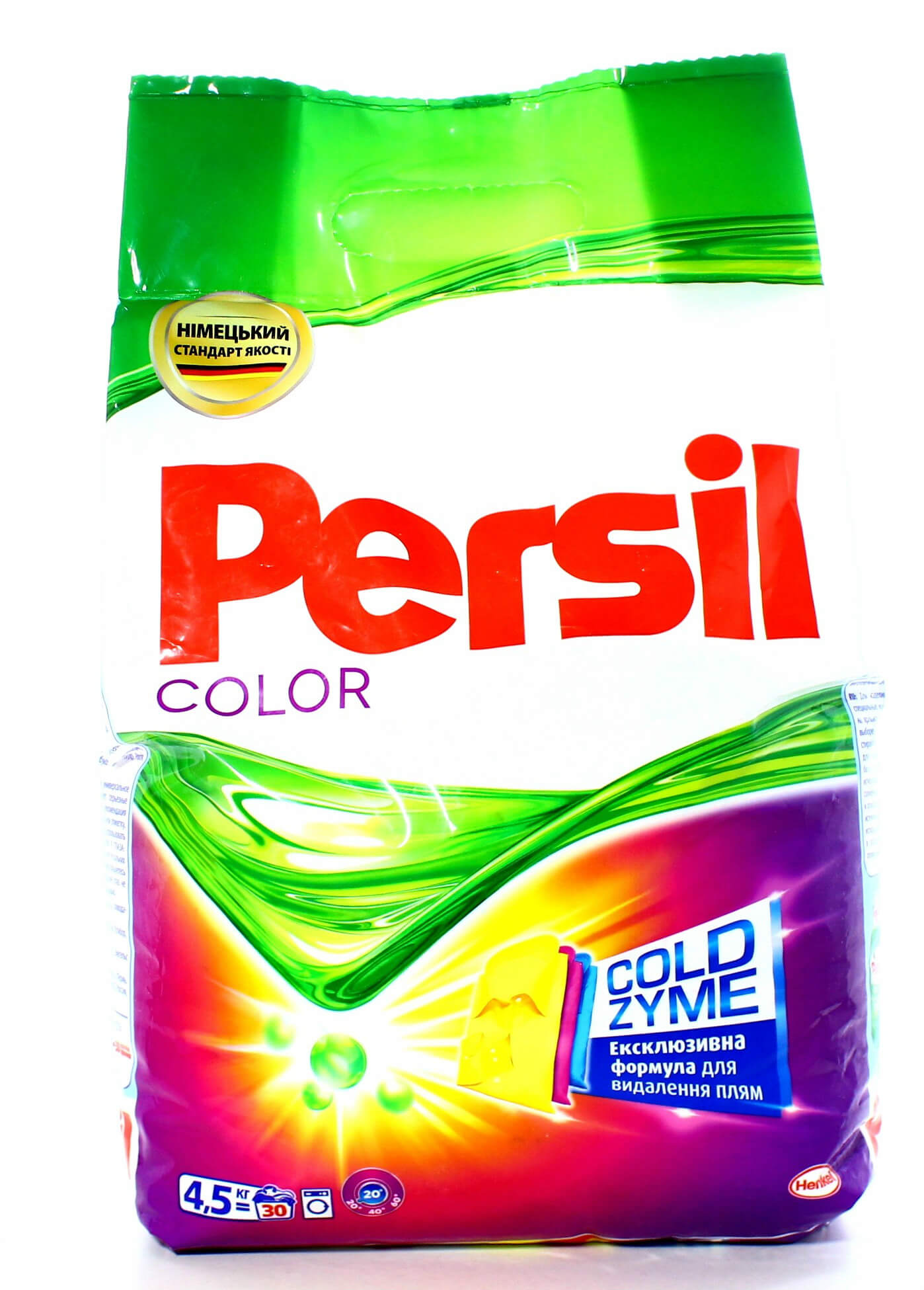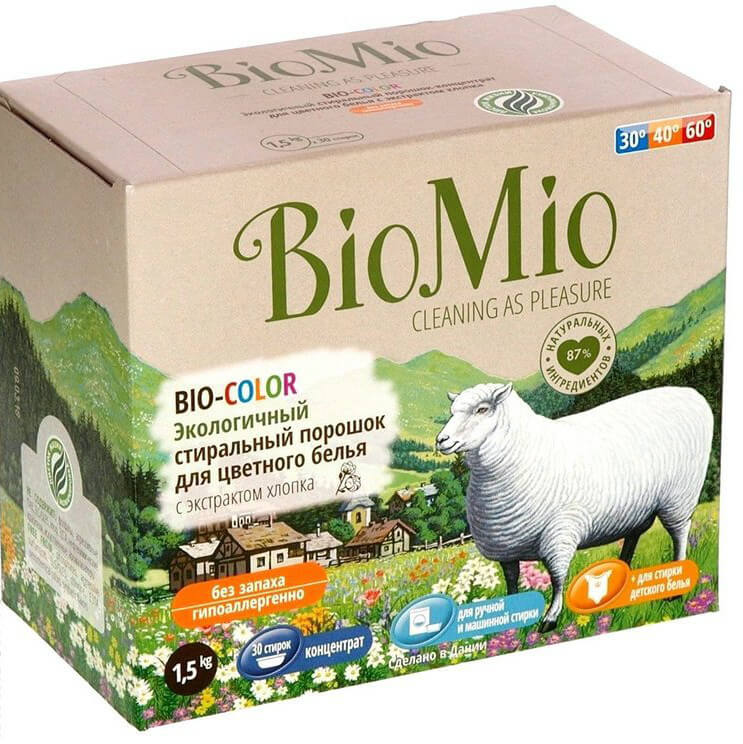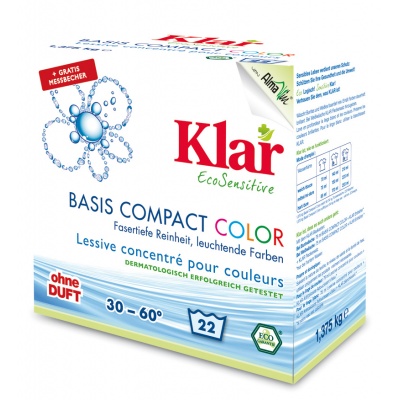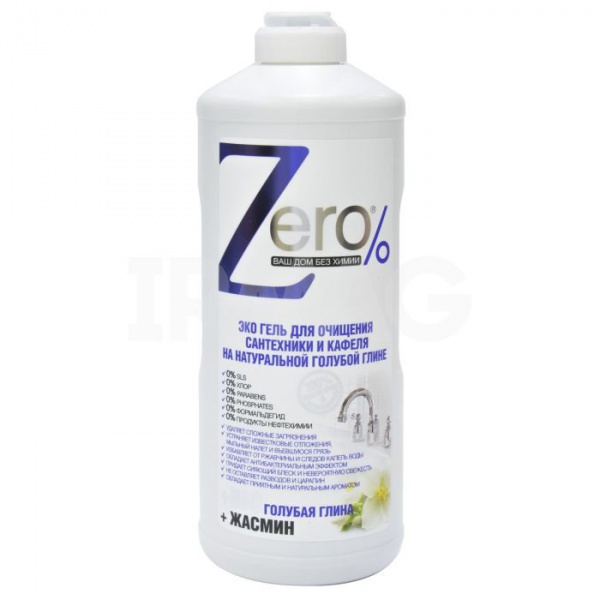The strongest toilet cleaner ever. Household chemicals for a septic tank. Overview of detergents
For a comfortable and cozy life, regular cleaning of the apartment is required. The comfort and coziness in the toilet room especially depends on the condition of the room. In order for the cleanliness in the hygiene room to be impeccable, it is important to know which toilet product will help you achieve the best result in the shortest possible time. In this article, we will look at the principle by which a detergent for a toilet room is chosen, as well as what are their main features.
Criteria for choosing a toilet product
Commodity shelves of modern household chemical stores offer us huge selection toilet products from domestic and foreign manufacturers. All of them differ not only in price, but also in form, volume of production, method of application.
What substance to choose, so that the cleaning of this room was as easy as possible, and also no less pleasant?
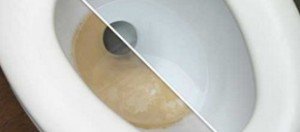 To get really good results with minimal cost time and effort, a good toilet detergent should have the following properties:
To get really good results with minimal cost time and effort, a good toilet detergent should have the following properties:
- Rust removal.
- Removal of limescale.
- The rate at which plaque breaks down.
- Disinfection properties.
It is the level of these indicators that manufacturers pay attention to when testing and inventing new formulas for cleaning products.
How to choose a toilet cleaner?
When choosing a new toilet bowl cleaner, you should consider that there are:
- special;
- preventive;
- universal means for the toilet;
- substances to remove blockages.
Types of household chemicals
The cleaning agents offered to us differ in the form of production, and therefore it is possible to choose the most suitable of the following options:
- Powder. Very common is the production of toilet detergent in the form of cleaning powder. Such a substance is quite affordable and easy to use, but when buying a cleaning powder, it should be borne in mind that the surfaces treated with it will have to be very carefully scrubbed using special brushes.
Important! With such processing, you can damage and scratch the surface of plumbing and decorative finishing materials that will ruin them appearance. In addition, such cleaning requires a lot of effort and time.
- Gel. Such toilet detergents have a thick gel structure, which is very convenient and economical to use. The special shape of the bottle allows you to apply the substance as efficiently as possible under the rim of the toilet, after which the liquid gel, evenly flowing down, is distributed along its walls. Thus, human contact with the active substance is minimized and there is no threat of contact with the caustic detergent on the skin surface.
- Detergent in the form of a paste or cream. Produces gentle and delicate cleaning of contaminated surfaces, but does not always lead to the desired result.
Important! The quality of the result from the use of the paste very often depends on the manufacturer. Therefore, often an excellent result without much effort is given by expensive means of this type.
- Liquid detergent for the toilet. Such products are quite effective for cleaning contaminants, but to achieve an excellent result, you have to apply a large number of substances. This leads to the fact that you have to buy the selected chemicals quite often, respectively, these are irrational expenses.
Toilet preventatives
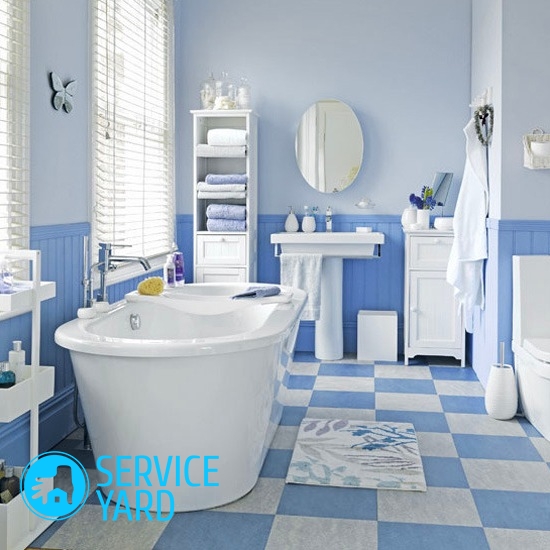 This kind of detergent is not used for cleaning and cleaning the bathroom. They are designed to keep sanitary ware clean and fresh, as well as protect against serious corrosive dirt on the surface of the toilet bowl walls.
This kind of detergent is not used for cleaning and cleaning the bathroom. They are designed to keep sanitary ware clean and fresh, as well as protect against serious corrosive dirt on the surface of the toilet bowl walls.
You can find the following preventive means for the toilet:
- Replacement block. Often this plastic product, which is attached with a special clamp to the wall of the bathroom. inside plastic block placed special fluid, balls or toilet soap. During each rinse, part of the substance is washed away, thereby protecting the surface from the accumulation of microorganisms, preventing the appearance of an unpleasant plaque and creating a feeling of freshness and cleanliness.
- Stickers - easily cling to a dry surface, under the inner area of the toilet bowl. With each rinse, the active substance will create a foam that spreads a pleasant aroma around the room. This tool is quite economical to use and protects against the accumulation of microbial foci.
- The magnetic ring is a novelty in the market of cleaning products. Place this device in a drain tank. The main task of the ring is to soften water, which prevents salts from settling on the walls of the toilet bowl as a plaque.
- Tablets. This toilet cleaner, like the previous one, drops directly into the drain tank. Dissolving, it creates a pleasant aroma, eliminates plaque, and also disinfects after each rinse.
What modern tool to use?
The shops household appliances offer us a huge selection of different cleaning products for the toilet, but what kind of detergent should be purchased in order to achieve the desired result as quickly as possible? Let's look at the most common examples of detergents:
- Active Toilet Duck is a cleaning substance, the formula of which was developed specifically for cleaning bathroom surfaces. Active substance perfectly copes with all types of pollution, even in hard-to-reach and practically inaccessible places. After processing the toilet, a pleasant aroma will remain in the room.
- Bref - detergent from this manufacturer comes on the shelves in the form of a gel, liquid detergent and powder. In addition to removing various contaminants, it has a disinfecting and antibacterial effect.
- Sanitol is a specialized gel for cleaning plumbing fixtures, produced in Russia. This product is intended not only for the treatment of the toilet bowl, but also for washing tiles, sinks, bathrooms and other surfaces of the hygienic room.
- Domestos is a toilet detergent that comes in the form of a concentrated gel. Perfectly cleans, refreshes and disinfects the treated surface.
- Cillit - Great for removing rust and nasty deposits. Perfectly refreshes the room.
Important! When choosing several bathroom care products, keep one thing in mind important rule: never mix products and apply one after the other on surfaces. In this case, as a result of a specific chemical reaction, very corrosive vapors can be released. They damage not only the skin, open mucous membranes, but also the respiratory tract.
In any case, work with household chemicals and folk remedies suitable for cleaning the bathroom, only in protective gloves, and if necessary, use additional gauze bandages or a respirator.
We hope that now it is much easier for you to deal with all the huge assortment of toilet products and choosing the right one for you will not be difficult.
A clean toilet and toilet bowl in your home is perhaps the most important criterion for cleanliness. Plaque, rust and an unpleasant smell can spoil the impression of even the most accurate housewife. Spending your precious time on this, admittedly, is not the most exciting activity, few people like it. From this point of view, it is especially important that the cleaner you use does not force you to spend more time cleaning the toilet than you would like.
We need economical and effective means household chemicals, which for one, two or three will save us from a number of problems like limescale, streaks, spots and sharp bad smell. Can advertising be trusted? How to navigate the variety of cleaning products that can be found on the market today and not make a mistake with the choice? To answer this question, it is necessary, first, to determine exactly what we expect from toilet and toilet cleaners.
We have tried to compile a comprehensive classification of cleaning products for you by collecting useful and important information about the composition, types and classification of toilet cleaners. So first, "toilet cleaner" is the term we'll use to refer to household chemicals that can be used to clean:
- actual toilets;
- bidet;
- urinals;
- any other surfaces like enamel, tiles, etc.
Cleaners can also be used for:
- For cleaning faience products (i.e. directly for the toilet bowls themselves).
- For the drain tank (usually - deodorizing stones or gel bags).
- For cleaning any surfaces.
- Gels are the most popular form of toilet cleaner. The reason for this is that due to the special shape of the neck of such bottles, the gels are very easy to apply under the rims of the toilet, it is quite difficult to penetrate anywhere else. This helps to avoid contact with the skin, which is also important. Finally, gels have a viscous consistency and due to this they are easily and evenly distributed over the surface.
- Liquid is a toilet cleaner that is similar in function and characteristics to gels, but tends to be less economical to use because it spreads much more easily over smooth surfaces, and therefore more are often needed.
- Powders, as a rule, are included in the list of universal products, for which cleaning the toilet bowl is just one of the possible uses. The effectiveness of their use is based on mechanical action. Speaking more plain language, when using the powder, you can not do without carefully rubbing the surface in order to remove dirt. In this case, not only our efforts work, but also the abrasive components contained in the powders. The big minus of powders is that these very abrasive components, especially if they are large, damage the surface. In addition, due to their nature, powders are easily dispersed in the air, sometimes getting into the eyes and nose. However, their undeniable advantage is that the cost of powders is much lower compared to other types of cleaning products, which makes powders more affordable and therefore more popular.
- Finally, there are the so-called "deodorizing stones" in the form of hanging blocks. They are quite popular, but have a significant disadvantage: the procedure for replacing them is not very hygienic. The advantage is that with each flush it is provided hygienic treatment and fresh scent. An alternative to hanging blocks are deodorant tablets (plates) that can be placed directly into the tank. But do not confuse: their purpose is only to maintain cleanliness, fresh smell and disinfection. They are not suitable for removing dirt!
The consistency of toilet cleaners, as well as the degree of their concentration, directly affects the quality and properties of the product and not all of them have the same goal. It's time to ask yourself - what is the purpose of household chemicals intended for cleaning toilets?

Here is a fairly exhaustive list that we can provide:
- First, the removal of limescale. Its appearance on your plumbing and tiles is due to the fact that the water we use contains a lot of salts (most often calcium and magnesium). Being deposited on surfaces, calcareous stones form a plaque that is not so easy to remove. Cleaning products that contain acid are the most successful in this task. However, the use of acidic products will most likely not go unnoticed either on your toilet or on other plumbing items in the house. In addition, acid can be dangerous to humans - if it gets on the skin or mucous membranes, the area should be thoroughly rinsed with water. Inhalation of acid fumes should also be avoided.
- Secondly, the removal of contaminants, some of which are ingrained and quite stable (as a rule, due to the fact that they are already old). I must say that with regular use, even not the most effective cleaning agent or only small amounts of them can perfectly maintain cleanliness. After all, it is always easier to remove fresh stains than those that have had time to eat properly from the surface.
- Thirdly, the destruction of unpleasant odors. At the same time, the cleaning agent can not only eliminate the smell, but also leave a certain aroma behind. The job of some household cleaners is basically to keep your toilet smelling good.
- Fourth, disinfection and control of germs and bacteria.
What about composition? It should be noted that the composition of approximately all synthetic detergents more or less identical - there are a number of chemical components that are mixed in different proportions, depending on what the purpose of this detergent is. Components can vary greatly in effectiveness and safety. If we consider the composition of detergents in more detail, we will find out this:
- Almost all household chemicals, including those whose purpose is to clean the toilet, contain surface-active substances (surfactants). The task of surfactants is to break down contaminants, separating them from the surface. The quality of surfactants may vary.
- To enhance the properties of surfactants, manufacturers add acids and alkalis to household chemicals. The former do an excellent job with rust, which is actually converted into soluble salt, while the latter dissolve fats.
- Finally, chlorine in household cleaning products helps to deal with problems such as rust and limestone, and also provides disinfection. However, chlorine also has a number of disadvantages, including an unpleasant and pungent odor, as well as the fact that prolonged use of chlorine-containing cleaners damages the surface over time.
But let's get back to advertising. You should be aware that many highly advertised toilet cleaners such as Cillit, Toilet Duck Active or Bref have an acid level below 3. This means that only gloves can be used with these cleaners! No less often flashing on TV screens "Domestos" in the composition has an alkali. Its acidity level is such that the use of rubber gloves is generally not necessary, but it is still better to wear them, especially if you use them often. In general, it is worth taking general rule that the stronger the cleaner, the more reasons you have to protect your hands!
But, for example, how to clean the toilet from rust most effectively? If we compare cleaning products by how well they cope with rust, then it should be noted that according to the studies, the best results were shown by "Cillit", "Toilet Duck Active" and "Sanitary Gel". they also do a good job with limescale, against which, for example, Domestos and Sanitol turned out to be rather ineffective. As for the destruction of bacteria, this is more of a publicity stunt, because it is clear that almost any cleaning agent is able to cope with bacteria due to the acids, alkali or chlorine contained in their composition.
The method of application of almost all toilet cleaners is similar: after applying to the surface, it is worth waiting for three to five minutes. If the contamination is ingrained, this time can be increased to ten minutes or even more.
Finally, a socially responsible buyer who also cares about environment, when choosing household chemicals, you may wonder: how to clean the toilet without harming nature? If the cleaning product is safe and does not harm the environment, then you will most likely find a mention of this on the packaging. Phosphates in toilet bowl cleaners can be a potential hazard, in particular. Getting into water bodies, they have a negative impact on the life of fish and other inhabitants of the depths.
Remember, any cleaning product, and especially one that contains potentially dangerous substances such as acids, chlorine or alkalis, is best kept as far away from children as possible! Mixing of chemicals, in particular with bleaches, should also be avoided. In case of contact with skin or eyes, do not panic, rinse thoroughly with water. In any case, read the instructions carefully. Invaluable help when choosing a toilet cleaner will be provided by reviews that satisfied (or not very satisfied) customers often leave on the Internet - on forums or specialized sites.
We can only wish you patience in such a difficult task as maintaining cleanliness in the house and especially in the toilet!
All autonomous sewers work on the basis of the processing of waste products by aerobic bacteria that appear in the treatment station under the influence of oxygen. Oxygen is pumped into the station using a built-in compressor. Aerobic bacteria process wastewater by oxidation, during this process heat and carbon dioxide are released, and the organic matter itself is converted into activated sludge. Aerobic bacteria are very sensitive to aggressive household chemicals, so it is necessary to monitor the composition of the detergents used.
In our article detailed overview household chemicals that can be used in septic tanks and treatment stations Topas, Astra, Biodeka:
WASHING POWDER
The main rule when choosing a washing powder is that it should not contain chlorine, phosphates, phenol, surfactants, petroleum products. That is, you can not use aggressive powders with a whitening effect. If you wash infrequently (1-2 times a week), then you can use ordinary powders: Tide, Ariel, Sarma, Persil, Losk, Eared Nian, etc. It has been experimentally verified that the use of conventional powders with moderate consumption does not lead to the death of aerobic bacteria in the VOC.
If you wash several times every day, then soft, eco-friendly powders from brands such as: AMWAY, Frosch (Frosch), BioMio, Sonett, ECODOO, Ecover, Chistoun, Mi&Ko (MiKo), Sonett, Klar, Garden, Molecola . As well as baby powders with a low content of surfactants and no phosphates: Our Mom, Organic People, BURTI Baby, BABYLINE, Sodasan, Baby Bon and others.
Consider some powders from different price segments in more detail:
|
TIDE 1.5 kg 280 rubles |
ARIEL 1.5 kg 240 rubles |
SARMA 2.4 kg 260 rubles |
|
LOSK 1.5 kg 265 rubles |
Eared babysitter 2.4 kg 305 rubles |
PERSIL 1.5 kg 350 rubles |
Now consider the softer and more environmentally friendly counterparts of the above powders.
AMWAY Concentrated Washing Powder
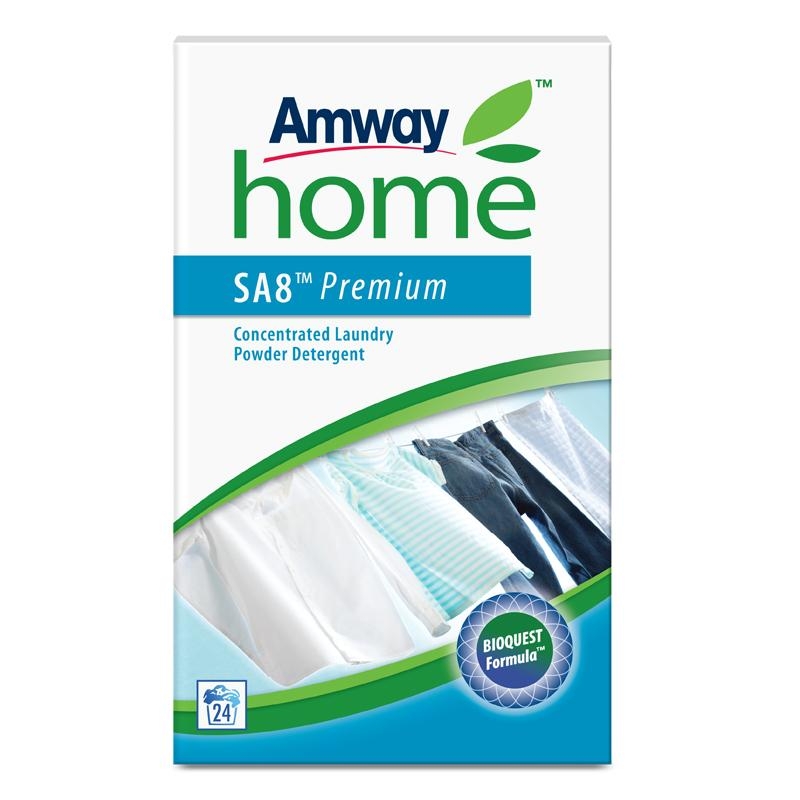
Based on active oxygen and bioenzymes, biodegradable cleaning ingredients derived from natural raw materials, water softeners and whitening additives. Does not contain chlorine and surfactants, suitable for washing with the installed autonomous sewerage. You can buy this powder on the official website:http://www.amway.ru/home/laundry-care-sa8#.WDP0hRqLRPY
Average price: 735 rubles
Volume: 1 kg
Frosch eco-friendly washing powder
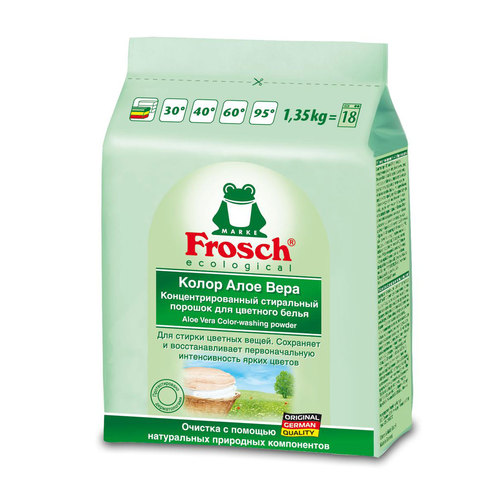
Organic laundry detergent suitable for allergy sufferers and children from birth. It does not deform the fabric, but at the same time it washes various types of dirt well. Does not contain lauryl sulfates, parabens, chlorine, phosphates, alkaline additives.
Where could I buy?
- In the hypermarket Lenta, Carousel, Okay, Azbuka Vkusa.
- By order at Ulmart (Yulmart):https://www.ulmart.com/goods/3571356 .
- In the store "Ecostation" at the metro station Vladimirskaya, pl. Vosstaniya, Mayakovskaya, Zvnigorodskaya, Obvodny Canal: http://bit.ly/2fAEPBd.
- In Eldorado: http://www.eldorado.ru/cat/detail/71112139/
Average price: 560 rubles
Volume: 1.3 kg
Eco-friendly washing powder Ecover
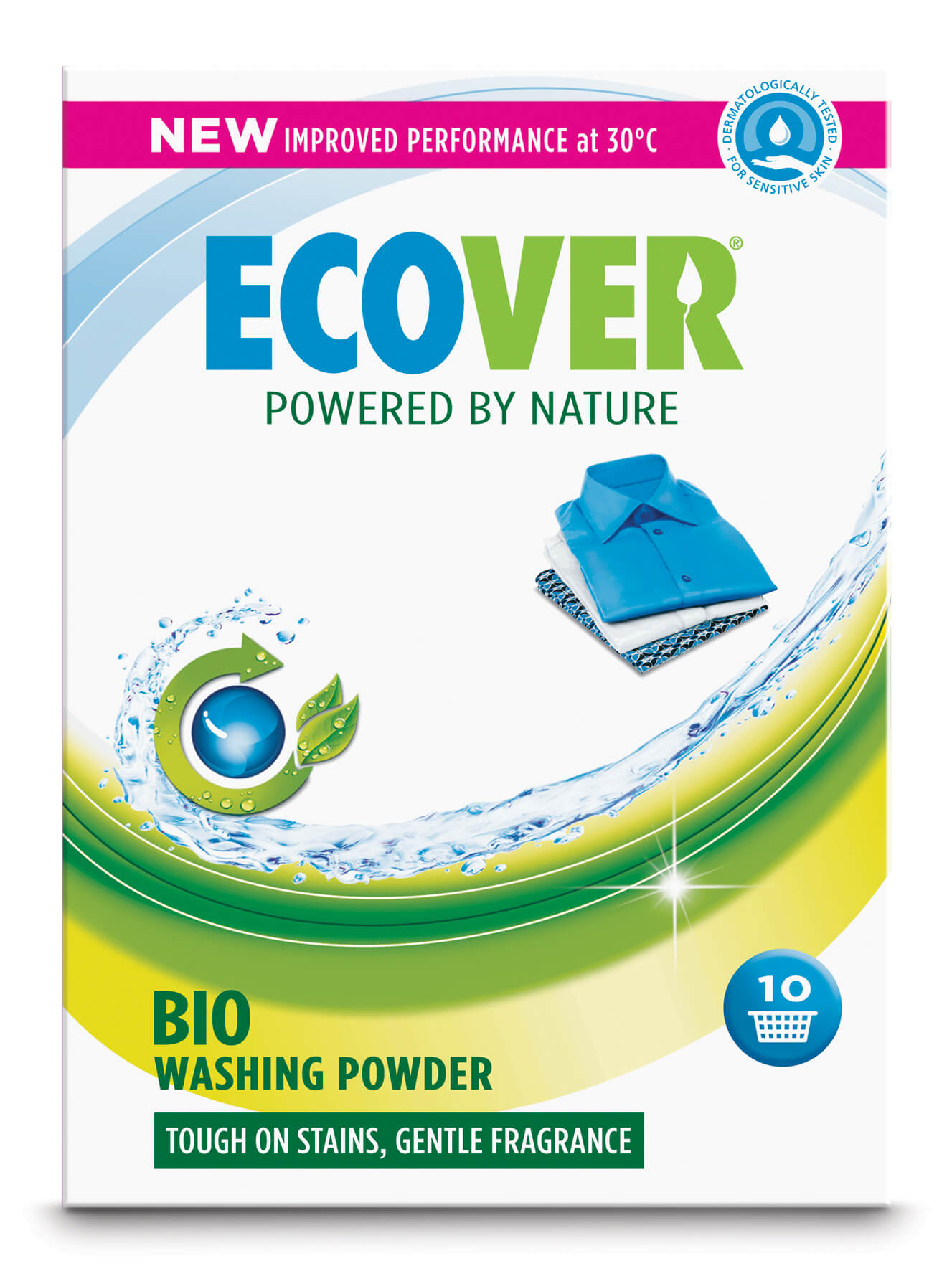
All Ecover products are made on a vegetable and sugar basis, do not contain surfactants, do not cause allergies. Suitable for washing at temperatures from 30 to 60 degrees, it has a biodegradable formula and is completely washed out of the fabric. Water after washing can be used to water plants. Suitable for everyday washing with the installed station Topas, Astra or Biodeca. Ecover also produces an organic stain remover that effectively removes dirt, wine, blood, etc. at a price of 260 rubles per 200 ml.
Where could I buy?
- http://bit.ly/2gbv24G
- In the Natural Life store on emb. Bypass channel, 23: http://bit.ly/2gh1Gmk .
- http://bit.ly/2f1y53c.
Average price: 720-770 rubles
Volume: 750 gr
Eco-friendly washing powder-concentrate BIOMIO (BioMio)
BioMio powder does not contain surfactants, chlorine, dyes, petroleum products, reflective whitening elements. Non-allergic, odorless, does not destroy fabric fibers, can be used for children and newborns. Suitable for daily washing if a septic tank or autonomous sewerage is installed.
Where could I buy?
- In the network of stores "Children's World":http://www.detmir.ru/product/index/id/326041/ , which has about 28 store addresses throughout the city.
- In the ABC of Taste: https://av.ru/i/265053/
- In the store "Rainbow Smile".
Average price: 420 rubles
Volume: 1.5 kg
Powder on herbal ingredients Klar (Germany)
Klar powders are safe detergents based on a soap extract extracted from vegetable oil. Suitable for washing in water from 30 to 90 degrees, does not contain chlorine, surfactants, fragrances, SLS, dyes. Can be used to wash baby clothes from birth, as it does not cause allergies and asthma (DAAB).
Where could I buy?
- IN Natural Life store on emb. Bypass channel, 23: http://bit.ly/2fMV01c.
- In the ABC of Taste: https://av.ru/i/348821/.
Average price: 1300 rubles
Volume: 1.375 kg
Garden - eco-friendly odorless washing powder
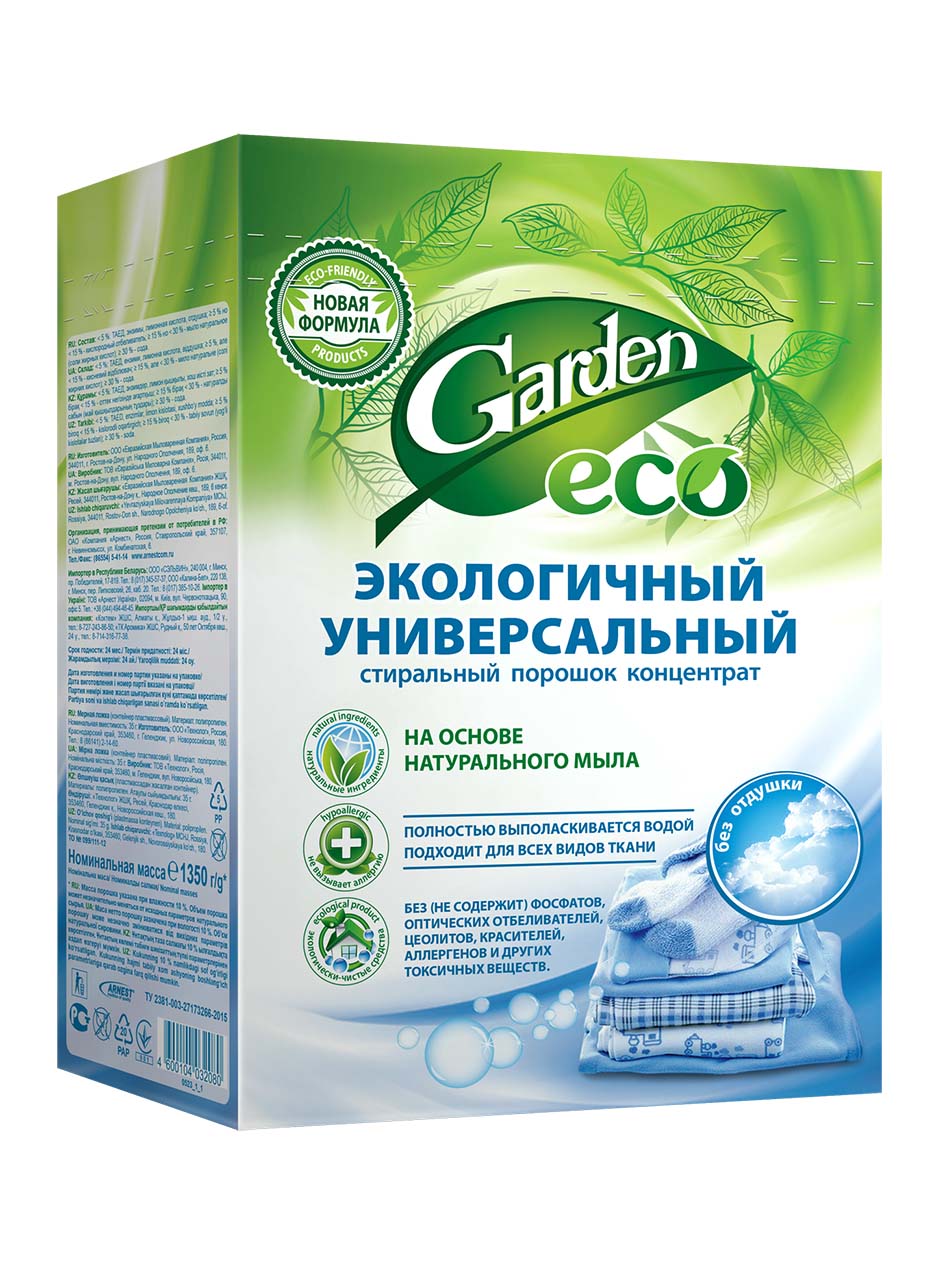
Another universal washing powder from a Russian manufacturer. It is made on the basis of plant components and minerals, thanks to which it does not damage the structure of the fabric and well splits even old stains. Does not require soaking and washes even in cold water. The powder does not contain phosphates, optical brighteners, surfactants, silicates, petroleum products. Biodegradable. Can be used for septic tanks and cleaning stations.
Where could I buy?
- In the Maxidom supermarket: http://bit.ly/2gcQp9j.
- In the ABC of Taste: https://av.ru/i/312172/.
- In Metro: http://bit.ly/2gfZxaZ .
Average price: 375 rubles
Volume: 1.350 kg
Synergetic Liquid Laundry Detergent 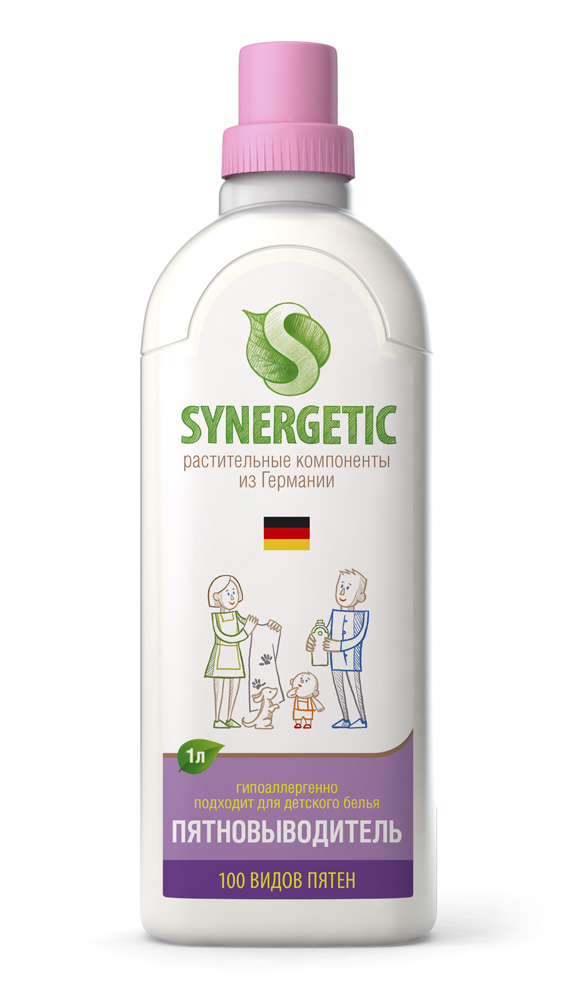
Biodegradable, hypoallergenic liquid remedy for washing various kinds linen: from silk to children's. It is easily rinsed out of clothes, does not cause irritation, splits even the most difficult stains. The product can be used for washing clothes at a temperature of 40 to 60 degrees. Does not contain chlorine, parabens, aggressive surfactants, etc.
Where could I buy?
- In clothing stores "Takko Fashion":https://vk.com/takko_spb . The chain of stores has 8 addresses, for example, not far from the metro Dybenko, Bukharestskaya, Moskovskaya, Zvezdnaya, etc.
- In stores "Clever": http://bit.ly/2gbv24G.
- In the store "Green" on Gorokhovaya, 46: http://bit.ly/2fXPhTY.
Average price: 250 rubles
Volume: 1 l
Laundry detergent PureWater
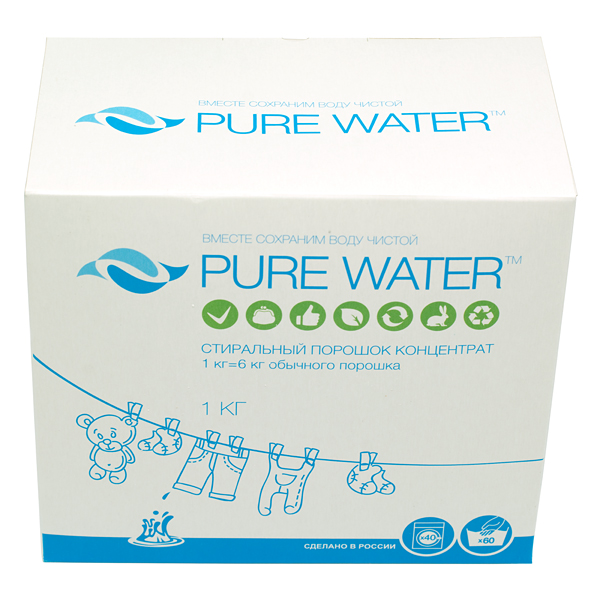
Biodegradable, organic powder, non-allergic, odorless, can be used to wash baby clothes from the first days of life. Natural composition based on vegetable and minerals. Does not contain aggressive substances: chlorine, alkalis, parabens, SLS, EDTA and NTA, etc. It can be used for daily washing if Topas, Astra, Biodeca or Eurobion is installed.
Where could I buy?
- In the Nature-Line store on Sedova 11: http://bit.ly/2fN1flS.
- In retail stores "Klever": http://bit.ly/2gbv24G.
- In the store "Green" on Gorokhovaya, 46: http://bit.ly/2gbzjVE.
Average price: 380 rubles
Volume: 1 kg
BATH AND TOILET CLEANERS
Like powders, cleaning agents must not contain chlorine, phenol, alkali, acids, ammonia, aggressive chemical and petrochemical components. Therefore, it is worth limiting the use of such products as: Domestos, Comet, Cillit, Toilet duck, Chlormisept-R, Maxi-Dez and the like. Almost all manufacturers of the powders we have listed above also produce organic cleaning products, which can also be used if a biological treatment station is installed in the house.
ZERO - Universal cleaning eco-cream
Eco-gel, effectively cleaning sanitary ware and tiles, made on the basis of blue clay and jasmine extract. Breaks down dirt of any complexity: limescale, rust, soap stains, dirt. It has a pleasant aroma and antibacterial effect. Suitable for cleaning sinks, bathrooms, toilets, showers and other surfaces, does not contain aggressive substances. There are a lot of household chemicals in this line: from dishwashing detergents to universal cleaning creams.
Where could I buy?
- In the store "Green" on Gorokhovaya, 46: http://bit.ly/2f1T0CY.
- In retail stores "Klever": http://bit.ly/2gbv24G , which are located near the metro station "Ozerki", "Kommendatsky Prospekt", "Dostoevskaya" or "Vladimirskaya".
Average price: 130 rubles
Volume: 500 ml
Meine Liebe Toilet Cleaner Gel
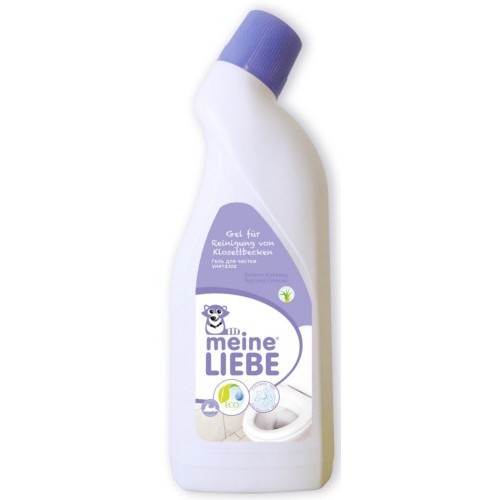
Meine Liebe soft toilet cleaning gel removes rust, lime deposits, urinary stone, even in water. Does not contain chlorine, alkali and abrasive particles. Suitable for use in homes with an installed septic tank or sewer. .
Average price: 240 rubles
Volume: 750 ml
Eco Gel Organic people for washing the toilet
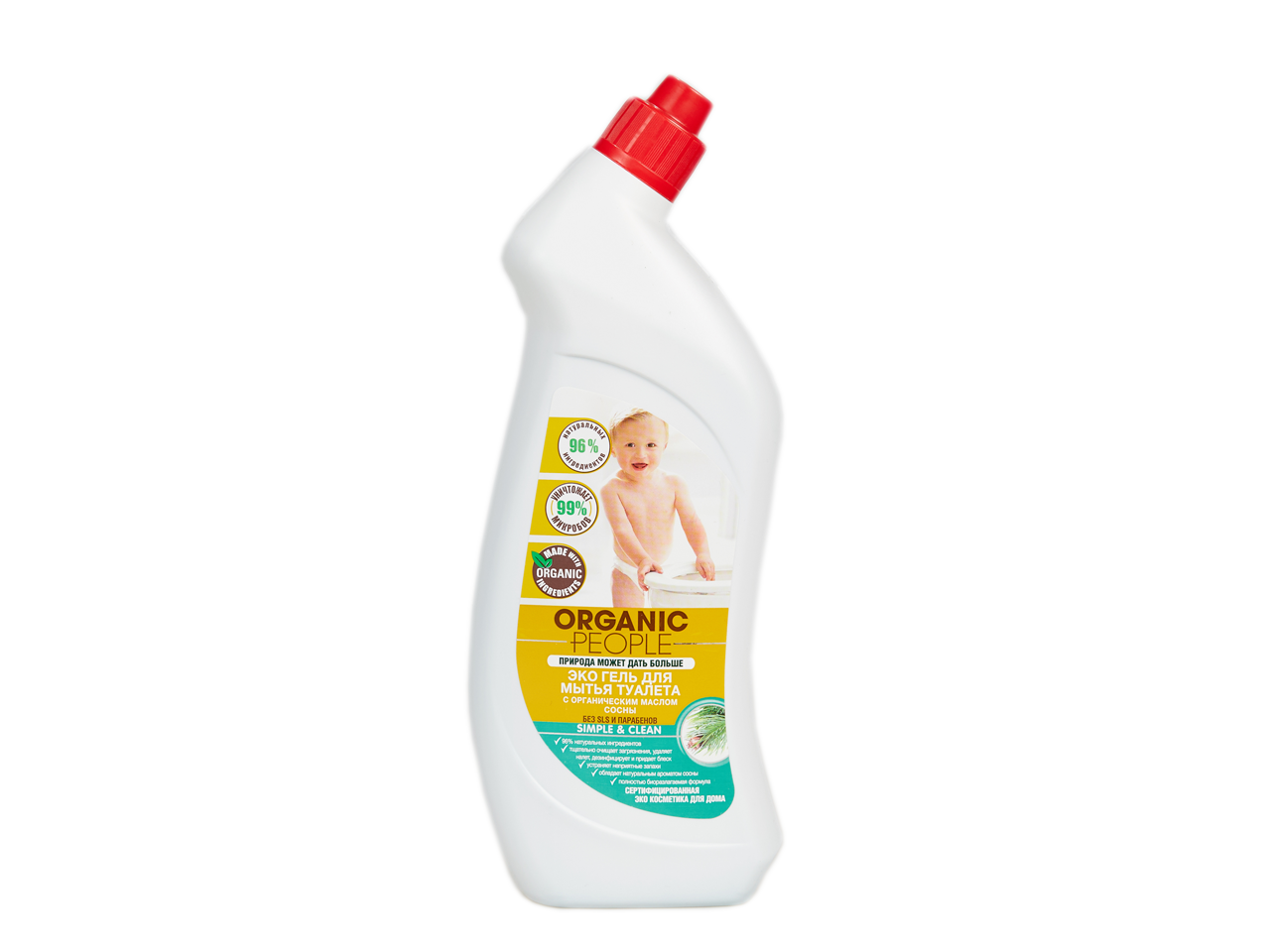
Gel for washing the toilet from well-known manufacturer"Planet Organika" on organic pine oil. It has a disinfecting effect, gives freshness to the toilet room, delicately cleans plumbing from dirt. Does not contain aggressive detergents, acids, alkalis, chlorine. Suitable for washing the toilet with an installed septic tank or autonomous sewage system.
Where could I buy?
- In the store "Green" on Gorokhovaya, 46:
HOW TO CLEAN A WASHING MACHINE WITH A SEPTICK
The rules are the same: the absence of aggressive substances and herbal ingredients at the heart of the product. You can also use the folk recipe:
- Pour 100-200 grams of citric acid or 100 ml of apple cider vinegar into the powder department.
- Put the machine on the long wash or boil mode.
- Wipe with a dry cloth inside the drum after draining the water.
DISHWASHER PRODUCTS
OPPO dishwasher tablets
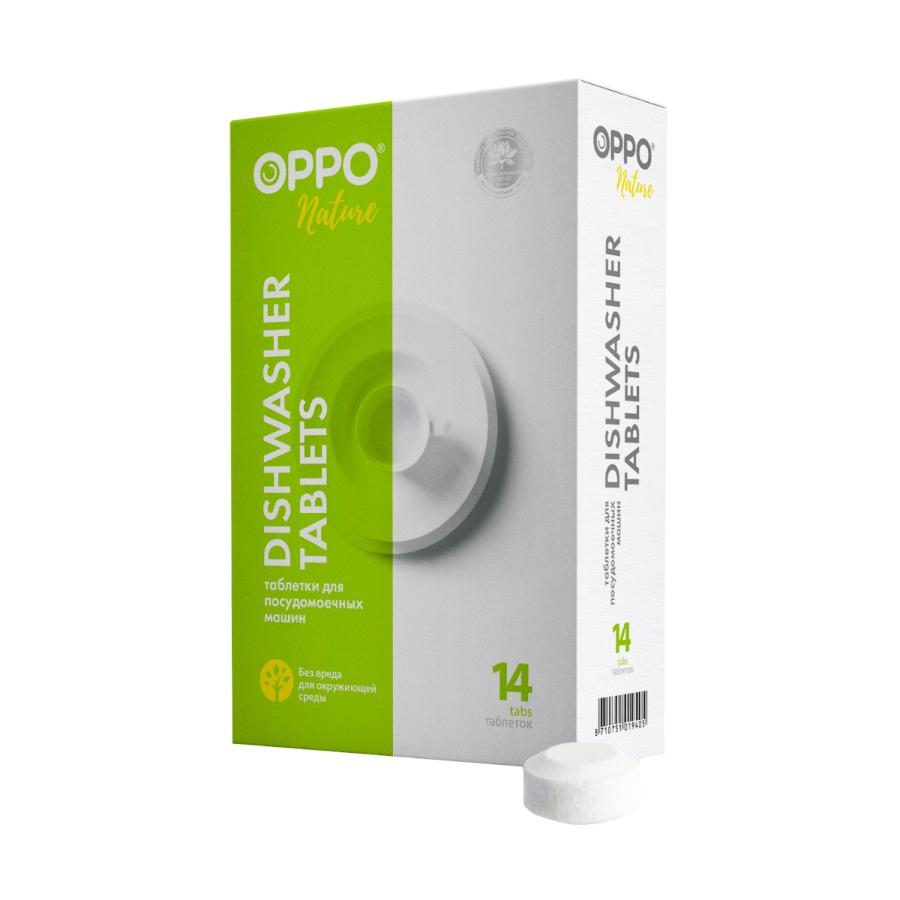
Special tablets for dishwasher with organic formula, not causing allergies. Prevents the appearance lime deposits on internal elements, effectively dissolves grease and other contaminants. Average price: 810 rubles
Volume: 1 kg
SUMMARYIt is possible and necessary to use household chemicals when using Topas, Astra, Biodek septic tanks. Shampoos, soaps, hair balms, toothpaste, dishwashing detergent do not bear the cleaning station any harm. As for the rest of household chemicals, the only condition is to pay attention to the composition of the products. They should not include:
- Maximum acceptable level nonionic surface-active components (surfactants) more than 5-10%.
- Phosphates
- Acids, alkalis, ammonia. It is also not recommended to drain medicines, hydrogen peroxide, water with potassium permanganate, furacilin, etc.
- Phenol (plastics, adhesives, resins), perfume essences.
- Chlorine, aggressive abrasives, strong whitening effect.
- Mineral oils, refined products (varnishes, paints).
- You should also not use rough toilet paper from waste paper.
Now the stores offer a wide range of products that do not contain the above components, including products intended for use when there is a child or an allergic person in the house. To choose household chemicals in addition to those listed, read the label and choose products that suit your pocket and other characteristics. This way you will protect your cleaning station from the death of aerobic bacteria.
P.S. I would like to note that a single hit of the above aggressive substances will not lead to disruption of the station. After using such a substance, limit the use of household chemicals a little - the bacterial colony will recover in 5-8 days, depending on the amount of the substance. However, such household chemicals should not be used on an ongoing basis.want more useful materials and articles? Subscribe to our group
The cleanliness of a housewife is easy to determine, just by briefly looking into the toilet and assessing the condition of the sanitary ware. No amount of air freshener will help when the toilet itself is sloppily cleaned. Of course, if the plumbing is cleaned conscientiously and regularly enough, then a few drops of any cleaning agent will be enough to keep it clean and shiny. But even with diligent care, not everything depends on the cleaner.
Rust streaks form on the shining faience, limescale grows, urinary stone deposits appear ... It’s not even worth reminding what a myriad of bacteria and microbes quite comfortably and rapidly multiply in the warmth and moisture of the toilet bowl. It is impossible to completely exclude their appearance on the toilet, due to its specific and unique function. But to make sure that the number of harmful microorganisms is minimal, and to complicate their opportunities for reproduction - this is quite within the power of every diligent housewife to do.
The search for the answer to the question "how to clean the toilet" begins with an assessment:
— identification of the most contaminated areas;
— determination of the type of pollution;
- selection of the appropriate cleaning agent.
Gone are the days when the hostess could use only banal bleach. We will not consider means specializing in “breaking through” blockages, this is a separate topic for conversation and the range is rather narrow. Usually blockages occur in cases where the issue regular brushing toilet bowls are approached extremely dismissively or use a toilet bowl instead of a trash can. Choosing detergents for cleaning toilets is much more difficult. Today chemical industry puts out a myriad of offers for sale, some of which provide a successful fight against one specific type of dirt, while others claim the high-profile title of universal. The hostess can only decide how to wash the toilet.
Nowadays, there are many ways and possibilities to choose the best remedy to clean the toilet. You can try everything, and use the "poke" method to determine the best for yourself. You can trust advertising. Or you can spend some time and study this issue in more detail with the help of the Internet, the advice of experienced friends or special magazines. Then you can find out that toilet cleaners are produced in a variety of compositions and in any form, trying to make the use as convenient and safe as possible. In order not to get lost in such a variety and choose the most effective toilet bowl cleaner, it is worth dwelling in more detail on a few of the most common ones.
Why and how do we clean the toilet
Normal flushing does not provide the necessary cleanliness in the toilet. Elementary Rules hygiene require regular cleaning and disinfection of the toilet, as a place of potential concentration of harmful microorganisms. The quality of water in our homes is often unimportant, in many regions its hardness is very high. The seals in the tank are not always ideally fitted. As a result, water saturated with lime and rust oozes down the toilet, painting it with bizarre but extremely unattractive streaks. And a careless attitude to the obligatory descent of water after the administration of need leads to a gradual increase in deposits, known as urinary stone. Even on a brand new toilet, unpleasant rusty “paths” and gray stains can appear. And then you have to make constant efforts to wash the toilet from rust and raids.
Therefore, any attentive and caring housewife will sooner or later have a question: how to wash the toilet from yellow plaque? How qualitatively, and most importantly, how to wash the rust in the toilet? The easiest way is to head to your local hardware store and purchase your own toilet bowl cleaner. Most often, these are adapted universal remedies that comprehensively help get rid of both urinary stone and plaque. The fact that at the same time harmful microbes are destroyed is self-evident, because most formulations include disinfectants, in addition to aggressive acids and alkalis. Along with the product, you must purchase thick rubber gloves and a respirator (if you have to work with bleach or acids).
Any toilet cleaner is mostly surfactant, to which the manufacturer adds chlorine, alkali or acid. The surfactant breaks down contaminants, making them easier to separate and remove. Acids, alkalis and bleach multiply the effect of surfactants. Moreover, each of the additional components has its own function. Alkalis better cope with fats, and acids - with rust and plaque. Chlorine deals with both, and disinfects the surface along the way. That is, you first need to understand what exactly you have to fight with, and then decide which is the best toilet cleaner to choose. What is the point of taking a composition that fights well with urinary stone, but ineffective against rust.
It is also important in what form the product is produced, sometimes the effectiveness of the composition directly depends on this. By texture, such products are divided into powders, gels and liquids.
Abrasive (powdered) - this is the most inexpensive and quite effective method. The cleaning powder is simply applied to the brush and the surface is carefully rubbed. But it will take quite a long time to do this, making considerable efforts. And yet such a toilet cleaner leaves quite noticeable scratches on the surface, in which, over time, traces of rust or plaque appear more and more noticeably.
Abrasive powders often include bleach in their composition. It is not difficult to recognize chlorine-containing products by a very characteristic smell. In its pure form, chlorine is used less frequently today, mainly in medical institutions, kindergartens and schools. This powdered toilet cleaner and disinfectant is incredibly aggressive and has the strongest suffocating smell, equated to the effects of poisonous substances. Therefore, work with such means only with gloves and protecting the respiratory system.
Chlorine is able to break down grease, plaque, and rust, but it is most effective as a disinfectant. However, over time, bleach corrodes the surface, faience loses its luster and smoothness. For everyday cleaning, bleach is used in the form of a liquid solution, which is periodically treated with a toilet bowl. And yet, bleach is gradually being replaced by more modern formulations.
On sale there is inexpensive and very effective oxalic acid. It is sold in powder form. The only, but significant disadvantage of this tool is its high acidity, so you need to work with the use of personal protective equipment. In addition, it is necessary to strictly dose the time of exposure to the surface of the toilet bowl, since oxalic acid can corrode it quite strongly. But on the other hand, the absolute purity and whiteness of the toilet bowl is ensured, even if not chemically pure oxalic acid is used, but a means in which it is only one of the components. Gels and liquids are also a fairly effective toilet bowl cleaner.
Without damaging the surface, they make it flawlessly clean without much effort. It remains only to decide what specific composition is required if the toilet bowl has faded. Someone prefers to purchase separately toilet bowl cleaners from rust, for someone it is much more relevant to purchase an effective toilet bowl cleaner from urinary stone. Still others are only interested in the disinfectant properties of the composition. But it is wiser to find something universal to save time and money, as well as reduce the inevitable damage to the surface of the toilet.
Consider cleaning compositions in terms of chemical components. Allocate alkaline and acidic agents. This is determined by the acidity coefficient, which can range from 3 to 12. Means are considered alkaline, where the acidity coefficient is from 7 to 12. Anything lower is acidic. The treatment of the toilet bowl with both types of compositions is identical. The water is drained from the tank, the surface is dried, after which the product is applied. Twenty minutes later, the tank is filled again and flushed.
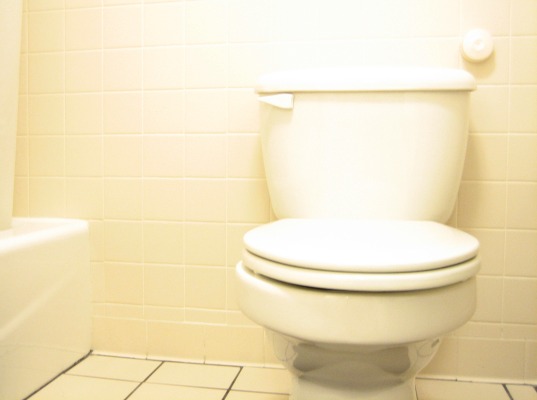
An acidic toilet and urinal cleaner will help clean the faience of all dirt. Such a toilet bowl cleaner may include various active acids that do an excellent job with rust and limescale. As in the case of powders, both ready-made products with acid and acids in a chemically pure form are used. The choice is determined by the degree of contamination of the toilet bowl.
Very dirty toilets are treated with acidic compounds. Hydrochloric acid toilet cleaner is one of the most powerful. Such a substance requires extreme caution, you can not inhale vapors and allow contact with the skin. Hydrochloric acid will clean the most stubborn dirt, it is very strong remedy for cleaning toilets. But due to its special aggressiveness, such a tool cannot be used if the toilet is connected to plastic pipes The acid will just eat them up. Constant use of such a composition is absolutely not worth it. But after acquiring such a tool, the question will no longer arise - how to wash the toilet bowl at home.
By the way, hydrochloric acid can be used not only as part of a cleaning agent, especially old dirt is removed with pure technical hydrochloric acid, which is sold in the markets. It is enough to moisten the stain and rub it lightly. And you need to do this in special anti-chemical gloves. In especially "severe" cases, the place of contamination is literally poured with acid, after which a hard scraper or knife is used.
As part of the finished product and in its pure form, citric and acetic acids are used. This is justified when it is decided how to wash the toilet from the stone. Because vinegar and lemon acid perfectly dissolves lime. It doesn't take long to dig up the Internet to find out how to clean the toilet from limescale. Acids are poured into the toilet, give time for the pollution to “acidify”, after which the plumbing is carefully cleaned with a brush. But acetic and citric acids cope only with small contaminants. Vinegar can be used already prepared by buying it in the store. 9% vinegar is also suitable, but it is better to purchase an essence, its action is more effective. Citric acid toilet cleaner is prepared independently, for which a standard powder package, which can be purchased at any store, is dissolved in a liter of water. Further, the plumbing is processed similarly to cleaning with vinegar.
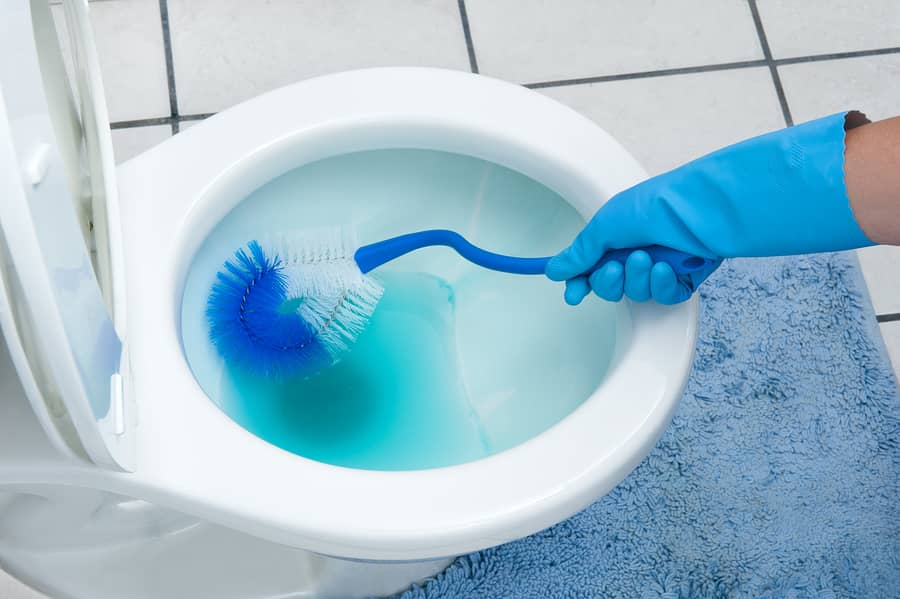
But it is most logical to choose ready-made detergents for cleaning toilets that have an acidity index below seven. These tools do an excellent job not only with limescale. They are indispensable if there is a problem - how to wash the toilet from urinary stone. These unsightly stains form on the walls of the toilet if flushing is neglected.
As the streaks dry, they build up and merge into dirty gray spots that literally dissolve before our eyes when acidic toilet cleaners are used. It remains only to thoroughly rinse the plumbing clean water.
In acid and alkaline compositions today they try not to include chlorine, as the most chemically hazardous element. Modern remedy for washing the toilet bowl is able to cope with all problems without chlorine. Perhaps the first time this is not always possible, but after repeated processing, the result is usually pleasing.
If nothing else helps
The not always unsightly appearance of the toilet bowl is the fault of a lazy hostess. Sometimes, when we move into an apartment bought on the secondary market, we have to live for a long time with old plumbing, involuntarily accepting what is left “as a legacy”. However, there are some things you can do in this case. The most powerful way to get rid of rust, plaque and urinary stone, even in the most neglected case, is considered to be an automotive electrolyte - a solution of sulfuric acid and distilled water. This is actually the best toilet stone cleaner, although it is very caustic. You should work with it very carefully, dosing the product strictly to places of special pollution. At the same time, it is necessary to protect the skin and respiratory organs as much as possible, wear a rubber apron and boots. Electrolyte cannot be cleaned plastic parts or pour into the drain tank, as the composition will almost instantly corrode all seals and fittings.
We clean the outside - remember the interior space
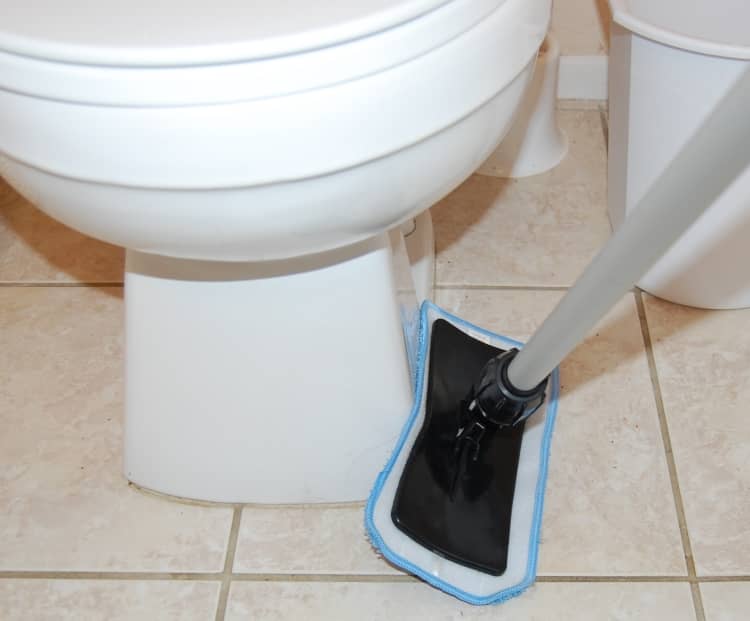
The toilet is cleaned not only from the outside. Special attention give to the question: how to wash the toilet inside. First of all, this is the space under the rim, the most inaccessible place. How to wash plaque in the toilet in this difficult place has already been written above, special composition or the means does not exist. The only requirement is a special shape of the spout of the bottle with the product, the bend of which allows you to pour the composition directly under the rim. After allowing the product to soften all dirt and deposits, you can clean under the rim with a thin curved plate and drain the water from the tank several times. It is not bad to consolidate success with special plates that are placed under the rim, interact with water with each descent and serve as a good preventive measure against dirt deposits.
It's not just the toilet that needs to be clean.
In addition to the toilet bowl, attention should also be paid to the lid. Since our skin is in contact with it, it is better if the cleaner for the wooden toilet lid or plastic toilet seat is neutral, that is, it contains a minimum of acids, chlorine or caustic alkali. A toilet bowl cleaner from stone, rust, or, especially, bleach is not suitable here. Therefore, manufacturers of household chemicals are trying to offer more and more effective products for cleaning toilets without chlorine. The effect of purity and disinfection is achieved in such compositions due to the special selection of surfactants. When choosing how to wash the toilet lid, you need to carefully study the composition. This issue is especially relevant in families with small children, whose delicate skin is much more sensitive than adults.
The toilet bowl also needs periodic cleaning. Rust coming through the pipes is deposited on its walls to a greater extent. It is cleaned by first completely draining the water. The toilet cistern cleaner can be liquid - this is for regular and serious cleaning of the cistern, or solid, in the form of tablets - to prevent contamination. But you need to select them very carefully, because the fittings of the tank are most often plastic, under the influence of strong acids or alkalis, it will simply collapse, like the rubber of the seals. In the process of cleaning, the product is applied with a sponge precisely on the walls and around the fittings, thoroughly washing off afterwards. To reduce the formation of rust deposits, they prefer to use prophylactic agents, such as tablets in a special holder on the wall of the tank. They dissolve slowly, preventing the walls of the tank from getting dirty and preventing rust from seeping into the toilet, clogging the pipes.
soda vs chemistry
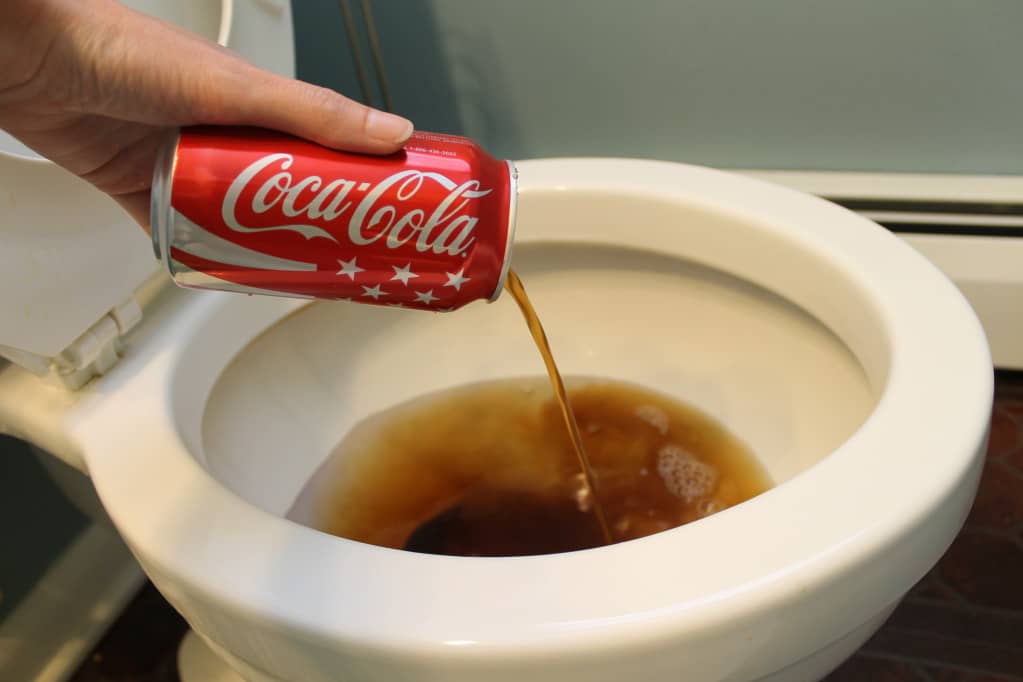
But not always purchased funds are the best way out. The inquisitive mind of the people, noticing some " side effects» the most familiar and mundane products offered original ideas use them as a homemade toilet cleaner. The most striking example is the sweet Coca-Cola soda persecuted by doctors. In many popular women's magazines under the heading useful tips you can learn how to wash the toilet with Coca-Cola. Most often it is used to get rid of plaque and stone, with small pollution. It will take a lot of drink, at least 4 liters, and in time the process takes three to four hours. But at the end, the hostess receives a clean sparkling faience. Some flavored carbonated drinks have the same effect. In addition, they simultaneously work as flavors.
Cleaning the toilet with folk remedies is not limited to soda. Toilets can be cleaned and disinfected even with banal hydrogen peroxide mixed with ammonia. Many housewives prefer the good old washing powder to any newfangled means.
So clean the toilet on your own and home remedies is quite real. How you can wash the toilet can be easily found out by any zealous housewife. There is nothing difficult in this. Bring the same full list modern cleaning products for toilets are not necessary. It is enough just to understand which one of them may be required for a particular toilet bowl. And you don’t need to start the cleaning process too much in such a delicate place, so that later you don’t have to resort to the help of “heavy artillery”, electrolyte or hydrochloric acid.
If the choice fell on chemical products, it would not be out of place to remember the precautions:
- bright colorful containers with funds should be inaccessible to children;
- with any chemical agent you need to work with gloves and a bandage;
- before buying, it’s good to find out if there are any allergies to individual components of the product.
The first impression of the apartment is formed not only from the arrangement of its hallway, but also clean toilet with installed there plumbing equipment, which are the main evaluation criterion for the cleanliness of residents. However, sometimes rusty streaks on the toilet bowl, lime deposits mixed with urinary stone, an unpleasant smell and the black inside of the knee under the mirror of water coming out of the bowl radically spoil the opinion about the accuracy of the hostess.
Therefore, cleaning the toilet bowl in each apartment should be carried out regularly. This process should not take much time, and the toilet bowl cleaner should be efficient, effective and not very expensive. On the modern market today you can see a huge range of all kinds of household chemicals for the care of the toilet. How to choose the most best option Let's try to understand this issue in more detail.
- 1 How do toilets get dirty?
- 2 Household chemicals
- 2.1 Most sought after representatives
- 2.1.1 Comet
- 2.1.2
- 2.1.3 Toilet duck
- 2.1.4 Bref Duo Stick
- 2.1.5 Domestos
- 2.1.6 Sanita
- 2.1 Most sought after representatives
- 3 Care and precautions
- 3.1 Video instruction for creating a cleaning agent with your own hands
- 4 Conclusion
How is toilet clogging formed?
The classic process of dirt on the toilet is due to the formation of rust and limescale.
- Rust is a deposit of iron oxides on the walls of the toilet, which is brought there with flushing water from the tank. Before entering the water, it goes a long way, during which it is saturated with iron and its oxides. This process starts from the level ground water, where there is a huge amount of dissolved iron, and then added from communication systems, which are almost entirely composed of old steel or cast iron pipes. The dissolved iron present in the water oxidizes in air, forming rust, which settles in brown-red streaks along the toilet bowl.
- Lime deposits settle on the bowl and drain pipe of the toilet like rust. They are a symbiosis of the calcareous components of water in the form of calcium and magnesium salts, as well as uric acid from human waste. Calcium and magnesium salts, like iron, enter the water from groundwater, leaching from the calcareous layers of sedimentary rocks of the soil.
To combat lime and iron particles dissolved in water and coming from the communication system, many install deep filters at the entrance to the apartment. This makes it possible to use purified water not only for food, but also for domestic purposes, which will help bring the sanitary ware of the toilet bowl to a snow-white state.
Household chemicals
For the constant maintenance of the bathroom clean, it requires constant care with special cleaning products for the toilet. Although this procedure does not cause great enthusiasm for many. Today, a large assortment of household care products, from which the shelves of shops and supermarkets are breaking, help to facilitate this task. They may be:
- Universal;
- Special;
- Preventive.
These funds are issued in the form:
- Gels;
- liquids;
- Powders;
- Kremov;
- blocks;
- Tablets;
- Sprays;
- stickers;
- Sharikov;
- magnetic rings.
When choosing a toilet bowl cleaner, you first need to decide on the type of pollution, take into account the scope of work, and figure out how to influence it.
The compositions of almost all toilet cleaners are identical, the main components in them are:
- Surfactants that break down dirt.
- Acid to remove rust and enhance the action of surfactants.
- Alkali, as a solvent for fatty deposits and organic blockages, partially eliminating plaque and rust.
- Chlorine for disinfection with the subsequent elimination of unpleasant odors.
The most sought-after representatives
When buying toilet cleaners, it is necessary to study in detail their composition, method of use, precautions from the manufacturer. Next, you need to pay attention to their packaging was convenient for use. For example, a plastic bottle should have a specially curved spout, which will help to better remove accumulated dirt from under the rim of the toilet bowl and its lid. In order to have a practical idea of the action of basic toilet care products, consider customer reviews of these products.
comet
Powerful gel cleaner with a pungent odor. It has a convenient plastic bottle with a special spout. It cleans the toilet bowl well from neglected rust, dirt with heavy mineral deposits, removes unpleasant odors, and gives the toilet a fresh aroma for a long time.
It belongs to the category of the most effective cleaning products for the care of toilet bowls of a very expensive price range. Issued in plastic bottle with sprayer. The convenient form of spot application on dirty, hard lime and rust deposits, allows you to quickly remove them, and then get an excellent result.
toilet duck
Works great with deeply ingrained rust, old dirt, greasy deposits. It contains hydrochloric acid, which helps to cope with cleaning in extreme conditions. A handy container with a curved "duck neck" neck makes it easy to dispense liquid cleaner under the toilet rim.
Bref Duo Stick
This product contains three sticks in one package, sealed in foil. Each of them is designed for 450 washes. It is used for daily care, provides constant cleanliness, fresh smell, hygiene to home plumbing fixtures. A dose of Bref creates a slight foam, gives the water a pleasant bluish tint, prevents the formation of limescale on the toilet bowl and knee, and completely disinfects the entire volume of the drain.
Domestos
A concentrated gel-like preparation containing chlorine-containing components, lauric acid, fragrance, dye. According to the method of practical action, "kills all microbes on the spot." Along with a strong disinfecting effect, it poorly copes with rust, but it removes persistent organic contaminants well, and has an excellent whitening effect. Domestos fights various bacteria, fungi, molds that can cause dangerous diseases and intestinal disorders.
Sanita
It's cleaning universal remedy domestic manufacturer is the most convenient, budgetary and effective prophylactic for the care of toilet bowls. Its plastic bottle with finger holes fits comfortably in your hand. The gel-like composition of the product washes well organic contaminants, it is economically applied with a sprayer.
Care and Precautions
Everyone knows that any pollution is easier to remove at the stage of their occurrence. You should not delay the time until the walls of the toilet become like karst caves. To do this, a brush must always be in the toilet area, and cleaning products in a place inaccessible to children.
During cleaning, the cleaning agent is poured into the toilet for half an hour, and then carefully wipe its surface with a brush and rinse with clean water. It should be noted that each tool must be used according to the instructions from the manufacturer.
At the same time, whatever it may be, it is necessary for everyone to observe safety measures when working with aggressive environments and wear rubber gloves. If they break during operation, they should be replaced. Do not allow splashes of cleaning agent to get on the face and eyes. If this happens, you need to immediately wash the affected area. running water with soap. Some people wear safety goggles before work to avoid unpleasant situations.
To protect the respiratory organs from harmful fumes of cleaning products with a pungent odor, it is necessary to close and leave the bathroom for the duration of the drug. After a while, you need to turn on forced ventilation to release harmful fumes into the street, and then further process the toilet bowl.
Video instruction for creating a cleaning product with your own hands
Conclusion
In order for the toilet bowl located in the toilet or bathroom to always have an attractive appearance and not frighten the guests, every hostess must be careful about cleaning it.
Today, with the help of modern cleaning products, this procedure can be carried out easily and quickly. The main thing is that in the end, a clean toilet bowl becomes a guarantee of health for the whole family and is pleasantly pleasing to the eye.
